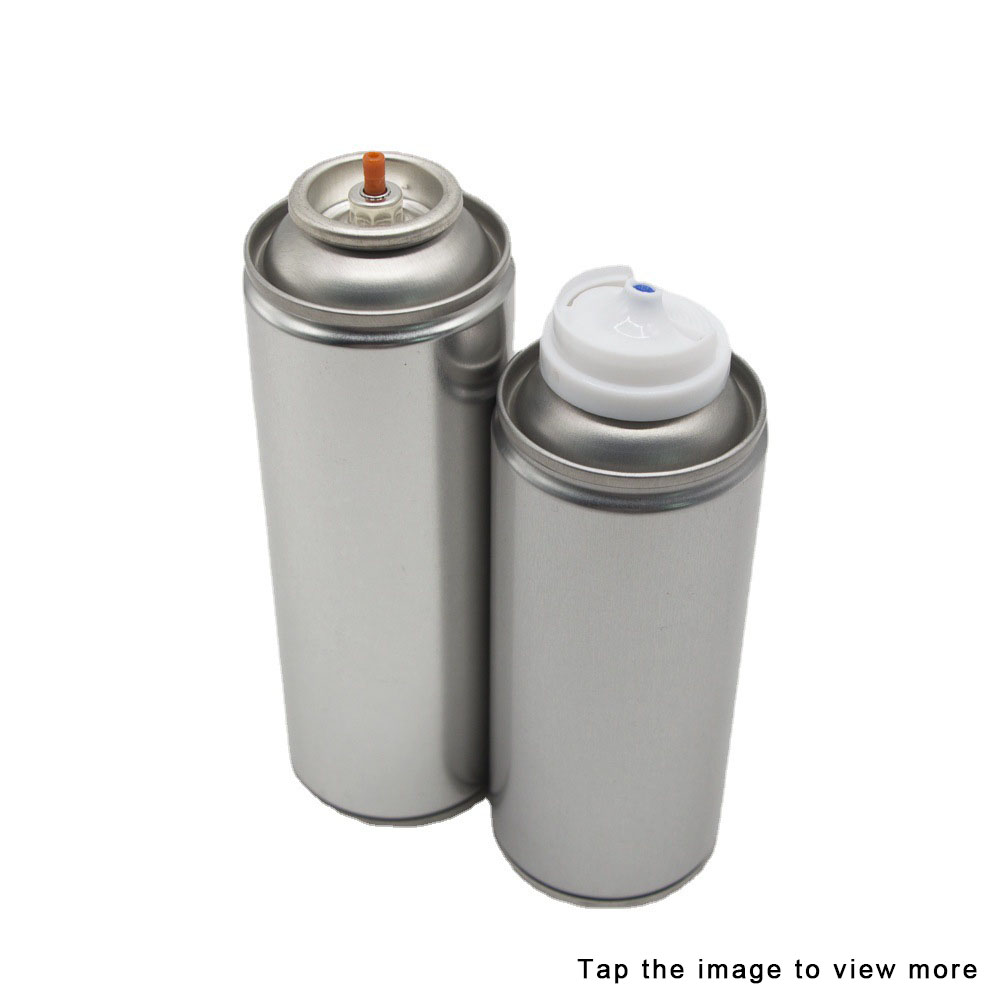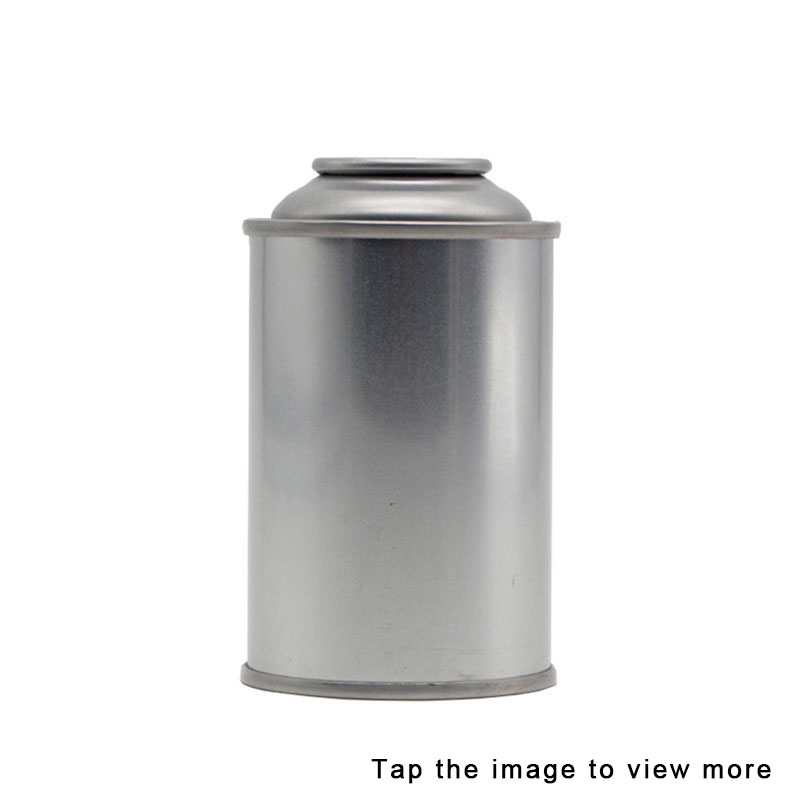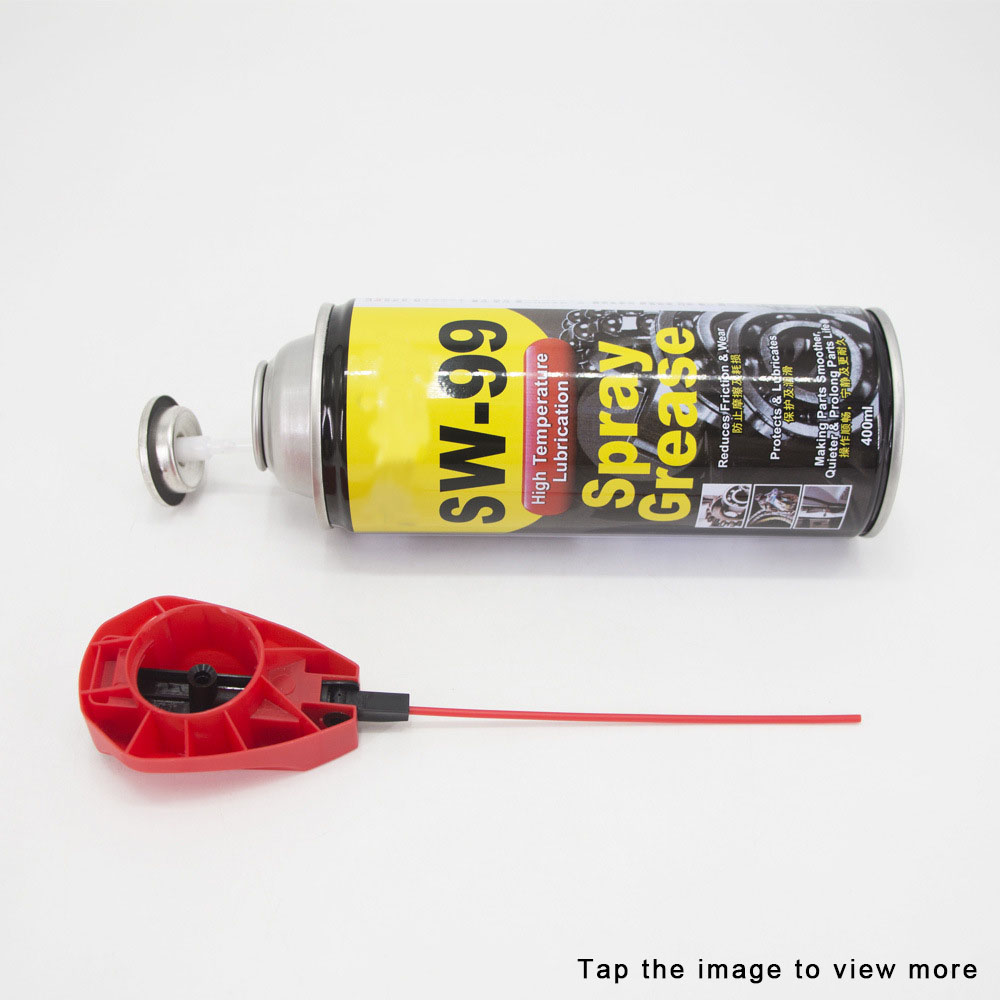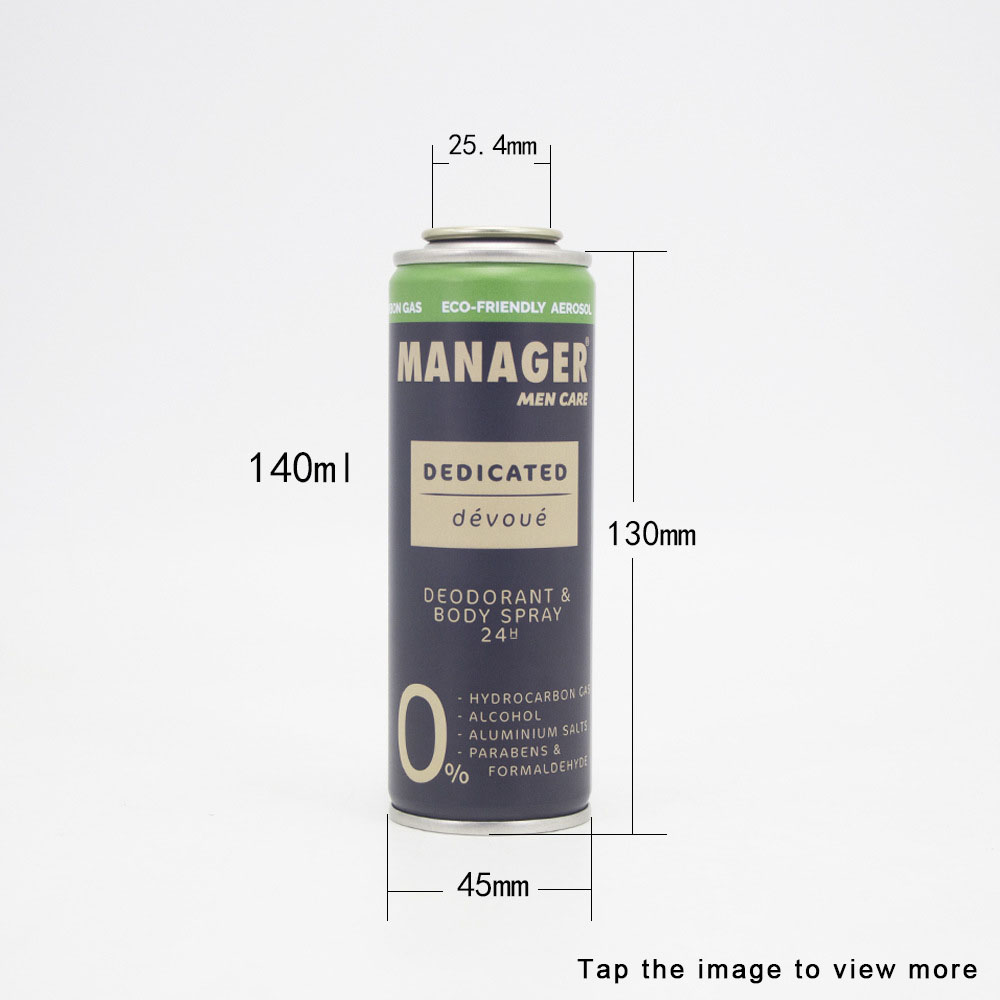Design and Manufacturing of Metal Aerosol Cans
An aerosol product is composed of five key components: the can, valve, actuator, atomizer, and dip tube. Inside the can, the product formulation is stored in liquid form under controlled pressure, combined with a propellant that exists in both liquid and vapor phases to create the pressurized aerosol system.
Darren Yi
yy-package@zmartechome.com
Section 1. Overview of Aerosol Cans
1. Aerosols and Aerosol Cans
The concept of the aerosol dates back to the late 1920s, when Norwegian scientist Erik Rotheim invented a “bug bomb” for pest control. After nearly a century of development, thousands of aerosol products are now available worldwide.
In China, the aerosol industry has more than thirty years of large-scale industrial production history. As a rapidly growing sector, it has expanded into all aspects of daily life—clothing, food, housing, transportation, and healthcare—forming a comprehensive industrial system with increasing international competitiveness. China currently ranks second globally in aerosol output, with industrial clusters concentrated in the Pearl River Delta, the Yangtze River Delta, and the northern regions of Hebei and Shandong.
Aerosol products are essential for beautifying life, improving efficiency, and safeguarding health, and they are applied across nearly every sector of the national economy. With the continuous advancement of science and technology, innovative structures and functions are constantly enriching the category and expanding its applications.
Aerosol products can be classified in various ways:
- By discharge pattern: spray, foam, powder, stream, or gel.
- By flammability: extremely flammable, flammable, or non-flammable.
- By propellant type: flammable propellants (e.g., LPG, dimethyl ether, HFC-152a) and inert propellants (e.g., CO₂, N₂, HFC-134a).
- By formulation base: oil-based, alcohol-based, or water-based.
- By end use: pest control, spray paint, personal care, automotive care, household care, construction materials (e.g., PU foam), industrial products, and pharmaceutical aerosols.
The aerosol can is the critical component that enables aerosols to be pressurized packages. Its evolution has driven the development of the entire aerosol industry. Early aerosol packages were heavy and difficult to use, whereas today's mainstream designs are tinplate three-piece cans and aluminum monobloc cans. Modern cans feature optimized structures, lightweight materials, thinner walls, improved barrier properties, better hygiene, and higher pressure resistance to accommodate new propellants.
Advances in forming and printing technologies have introduced shaped cans, embossed cans, and sophisticated printing techniques such as nine-color, color-changing, and digital printing. In many cases, the aerosol can has evolved from a mere container into a work of packaging art, adding significant value to aerosol products.
2. Definition, Function, and Working Principle
Definition:
An aerosol can is a non-refillable container with a maximum capacity of not more than 1000 mL, designed to dispense its contents as a spray through a valve system under internal pressure. Two key attributes define this container: (1) single-use, meaning it is not designed for refilling, and (2) capacity limitation to 1000 mL.
Functions:
An aerosol can serves multiple essential roles:
- A sealed container for the product formulation.
- A pressure vessel to hold the propellant's internal pressure.
- A base for mounting the aerosol valve.
- A printable surface for branding and product information.
Working Principle:
A typical aerosol package consists of a can, valve, actuator, atomizer, and dip tube. The can contains the product formulation and a propellant under pressure, with a vapor-liquid equilibrium. When the actuator is pressed, the valve opens, allowing the internal pressure to force the product up through the dip tube and out through the atomizer, where it is discharged as a fine mist, foam, stream, or droplets.
The propellant's rapid vaporization maintains constant internal pressure, ensuring continuous discharge until the contents are depleted. The spray characteristics depend on the valve orifice size, the actuator and atomizer design, propellant type and ratio, and the mixing method of product and propellant.
Section 2. Tinplate Aerosol Cans
Since the inception of the aerosol can, tinplate (electro-tinned steel) and aluminum have been the primary materials of construction. In recent years, laminated tinplate has gained popularity, especially for deep-drawing applications.
The most common configuration remains the three-piece can, though advances in materials, tooling, and manufacturing processes have driven rapid development of two-piece tinplate cans. One-piece steel cans have also been introduced in Europe and the United States, though large-scale application remains limited.
1. Tinplate Three-Piece Cans
Structural Features:
The three-piece can consists of a body, top end, and bottom end. The body has a longitudinal side seam and is double-seamed to the ends with sealing compound applied to the seams. Early designs had outwardly flanged ends with diameters larger than the body. Modern versions use necked-in ends to eliminate protrusion, improving aesthetics and handling. Necking may be applied to the top, bottom, or both ends (single- or double-neck cans).
The standard valve cup diameter is 25.4 mm (1 inch). Critical dimensions of the top end—such as curl height, curl diameter, and countersink depth—must meet strict tolerances to ensure pressure resistance and sealing integrity.
Specifications and Pressure Performance:
- Diameter & Height: Standard diameters include 45, 49, 52, 57, and 65 mm. Heights (body only) typically range from 96 to 300 mm.
- Capacities:
- Total Capacity (Vo): Internal volume without the valve installed.
- Usable Capacity (VR): Internal volume with the valve installed.
- Safe Fill Capacity: Maximum allowable fill based on an industry safety coefficient (typically <85%, but may range from 80% to 90% depending on product risk factors).
- Pressure Rating: Classified as standard, high-pressure, and ultra-high-pressure cans.
Manufacturing Process:
Key operations include tinplate printing/coating, sheet cutting, body forming and welding, end stamping, necking, flanging, double-seaming, leak testing, and drying. Critical steps are:
- Welding: High-frequency electric-resistance welding (ERW) is widely used due to its narrow overlap, reduced solder use, lighter weight, and improved appearance. Laser welding offers even finer seams, superior strength, and corrosion resistance but requires tighter dimensional control and higher capital investment.
- End Forming: Multi-stage progressive dies perform blanking, deep drawing, countersinking, piercing, and curling. Countersink depth control is crucial to ensure pressure resistance.
- Compound Application: Water-based sealing compound is applied to the end curls to ensure airtight double seams. Proper mixing and degassing are essential to avoid bubbles that can compromise sealing.
- Leak Testing: 100% in-line testing is mandatory. Air-pressure testing is preferred for automated lines due to its speed and sensitivity, while water-bath testing is used for manual or semi-automatic operations.
2. Tinplate Two-Piece Cans
Two-piece tinplate cans have no side seam. The body and either the top or bottom end are drawn and redrawn (DRD) from a single sheet of tinplate, with the remaining end double-seamed. Deep drawing requires low-temper grade tinplate (T1.5-T3) with excellent ductility and carefully controlled thickness (typically 0.2-0.4 mm) to balance pressure resistance and formability. Advanced materials such as laminated steel with PET film provide superior barrier properties and eliminate the need for internal coating.
Section 3. Aluminum Aerosol Cans
1. Structural Components.
Aluminum is one of the most important packaging metals, offering outstanding mechanical strength, excellent corrosion resistance, and exceptional decorative potential. It enables lightweight, thin-walled, high-pressure containers that are hygienic and fully recyclable.
The aluminum aerosol can is typically a monobloc (one-piece) can formed by impact extrusion or deep drawing of a single aluminum slug. Compared with tinplate cans, aluminum cans provide:
- High pressure resistance (burst pressures exceeding standard propellants' requirements).
- Seamless construction for superior barrier properties and hygiene.
- Excellent printing and decoration (up to nine-color printing, embossing, or custom shaping).
- Eco-friendly recyclability.
Structure and Specifications:
- Aluminum cans are seamless, with integrated body, top, and bottom. Standard valve cup diameters are 25.4 mm (1 inch) and 20 mm, with multiple shoulder profiles (round, dome, sloped, or stepped).
- Typical diameters range from 35 to 66 mm (25.4 mm valve) or 22 to 35 mm (20 mm valve), with total heights of 80 to 240 mm. Capacities range from 20 to 710 mL, but large-capacity high-pressure cans require advanced wall-thickness control and necking technology.
Manufacturing Process:
Aluminum monobloc cans are produced on fully automated lines through the following stages:
- Slug Lubrication (“Slug Conditioning”) - Aluminum slugs (typically 1070A alloy) are coated with lubricant for improved drawability.
- Impact Extrusion / Drawing - High-tonnage presses extrude and stretch the slug into a cylindrical shell. Secondary drawing reduces wall thickness and increases height.
- Trimming & Polishing - Excess metal is trimmed; surfaces are smoothed.
- Cleaning & Internal Coating - Multi-pass internal spraying ensures complete corrosion protection.
- Base Coating, Printing & Over-Varnishing - Up to nine colors may be printed directly on the cylindrical body with high registration accuracy.
- Necking & Shaping - Sequential necking stations form the shoulder and valve cup.
- Leak Testing & Packaging - 100% pressure testing ensures product integrity.
Manufacturing Process:
Aluminum monobloc cans are produced on fully automated lines through the following stages:
- Slug Lubrication (“Slug Conditioning”) - Aluminum slugs (typically 1070A alloy) are coated with lubricant for improved drawability.
- Impact Extrusion / Drawing - High-tonnage presses extrude and stretch the slug into a cylindrical shell. Secondary drawing reduces wall thickness and increases height.
- Trimming & Polishing - Excess metal is trimmed; surfaces are smoothed.
- Cleaning & Internal Coating - Multi-pass internal spraying ensures complete corrosion protection.
- Base Coating, Printing & Over-Varnishing - Up to nine colors may be printed directly on the cylindrical body with high registration accuracy.
- Necking & Shaping - Sequential necking stations form the shoulder and valve cup.
- Leak Testing & Packaging - 100% pressure testing ensures product integrity.
Key Takeaways
Metal aerosol cans—whether tinplate three-piece, two-piece DRD, or aluminum monobloc—are precision pressure vessels. Their design and manufacturing involve stringent control of material selection, forming processes, seam integrity, and surface treatments. Advances in welding, coating, and printing technologies continue to push the industry toward lighter, stronger, and more visually striking packaging solutions that meet ever-higher performance and sustainability standards.
This content is provided by the YYBOXES Packaging Innovation Center. We specialize in premium aluminum packaging solutions, helping brands enhance product value and strengthen market competitiveness.







